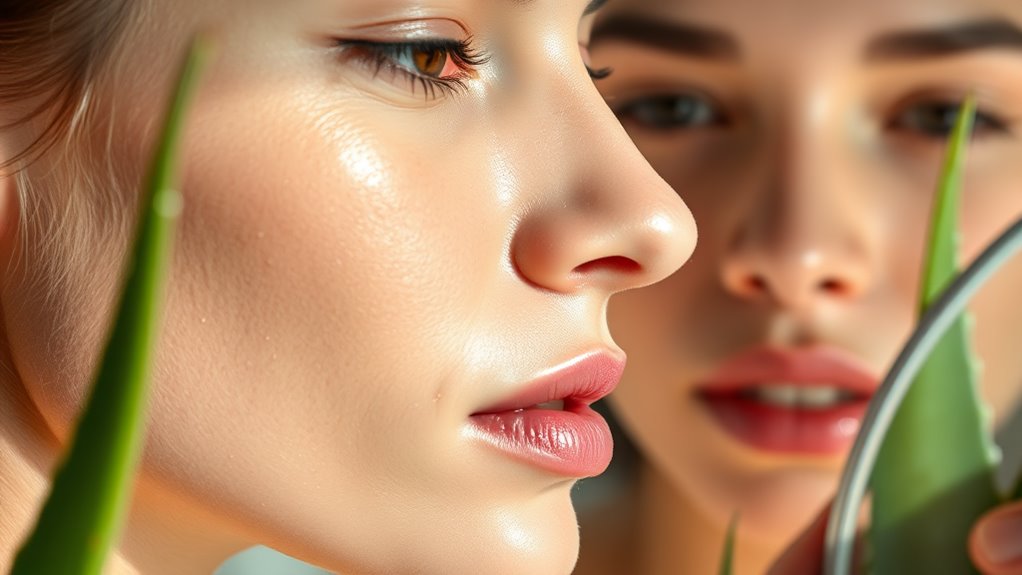How to Tell If Your Skin Is Dehydrated (Not Dry)
Your skin’s health can often be confused with dryness, but it’s crucial to distinguish between dehydrated and dry skin. Dehydration refers to a lack of water, which can manifest in different ways, impacting your skin’s overall appearance and texture. If you notice dullness, roughness, or increased visibility of fine lines, your skin might be signaling a need for attention. Understanding these signs can lead you to effective solutions for rehydration.
Understanding Skin Dehydration
Although your skin might feel normal, it can still be dehydrated, which means it lacks water despite having adequate oil levels.
Understanding skin dehydration involves recognizing several key signs that indicate a lack of moisture. You might notice a tight sensation, especially after cleansing, or experience a dull, lackluster appearance.
Fine lines may appear more pronounced when your skin is dehydrated, as the decreased water content can affect its overall texture. Additionally, you could find that your skin becomes more sensitive, reacting to products that it typically tolerates.
The presence of redness or flakiness can also serve as dehydrated skin signs. Environmental factors such as temperature and humidity can exacerbate skin dehydration, so identifying these symptoms early allows you to address dehydration effectively and restore your skin’s hydration balance.
Key Signs of Dehydrated Skin
Key signs of dehydrated skin include a dull, lackluster complexion, which can stem from insufficient moisture. You may also observe fine lines or wrinkles appearing more prominent, as dehydration diminishes skin elasticity.
Tightness after cleansing or exposure to the elements often signals low hydration levels. Additionally, if your skin feels rough or uneven to the touch, dehydration is a likely factor.
Redness and increased sensitivity may manifest due to weakened skin barriers. Lastly, you might find your skin is more prone to breakouts, as dehydration can cause an imbalance in oil production.
Recognizing these signs is essential for appropriate treatment. Addressing persistent dry skin can greatly improve your overall skin health and appearance.
Differences Between Dehydrated and Dry Skin
Understanding the differences between dehydrated and dry skin is essential for effective skincare. Dehydrated skin lacks water, which can result in a tight, uncomfortable feeling. It may also appear dull and show signs of premature aging.
In contrast, dry skin is a skin type characterized by a deficiency in natural oils. This results in flakiness, rough texture, and often visible cracks.
While dehydrated skin can affect all skin types, dry skin pertains specifically to those with less oil production. You might notice that dehydrated skin improves with hydration, while dry skin typically requires emollient-rich products to restore moisture levels.
To effectively manage these conditions, it’s important to avoid common mistakes such as using harsh cleansers that strip the skin of needed natural oils and to follow a well-suited skincare regimen.
Recognizing these distinctions enables you to tailor your skincare routine appropriately for optimal results.
How to Identify Dehydrated Skin
Identifying dehydrated skin can be straightforward if you know what signs to look for.
First, observe your skin’s texture; dehydrated skin often appears dull and may feel rough. You might notice fine lines, particularly around the eyes and mouth, which can indicate a lack of moisture.
Additionally, pinch your skin gently. If it doesn’t spring back quickly, it may be dehydrated. Look for redness or irritation, as this can signal an imbalance in moisture levels.
Finally, if your skin feels tight, especially after cleansing, it’s likely dehydrated. Over-cleansing can also contribute to these symptoms, leading to stripped essential moisture and further exacerbating dehydration.
These signs can help you recognize the condition, allowing you to take necessary actions to restore hydration effectively. Always monitor your skin’s behavior for accurate identification.
Tips to Rehydrate Your Skin
To effectively rehydrate your skin, incorporate products that contain humectants, such as hyaluronic acid or glycerin, which attract and retain moisture.
Additionally, use a good moisturizer that seals in water; opt for one with occlusives like petrolatum or dimethicone. Apply your moisturizer on damp skin for optimal absorption.
Consider using a hydrating serum to enhance moisture levels, applying it before your moisturizer.
Also, drink sufficient water throughout the day to support internal hydration. Avoid harsh or alcohol-based products that can exacerbate dehydration.
Lastly, limit exposure to hot water and dry environments, which can strip moisture. Implement these strategies consistently for effective rehydration and healthier skin. Importantly, be mindful of common sensitive skin symptoms, as these can affect your overall skin health.




